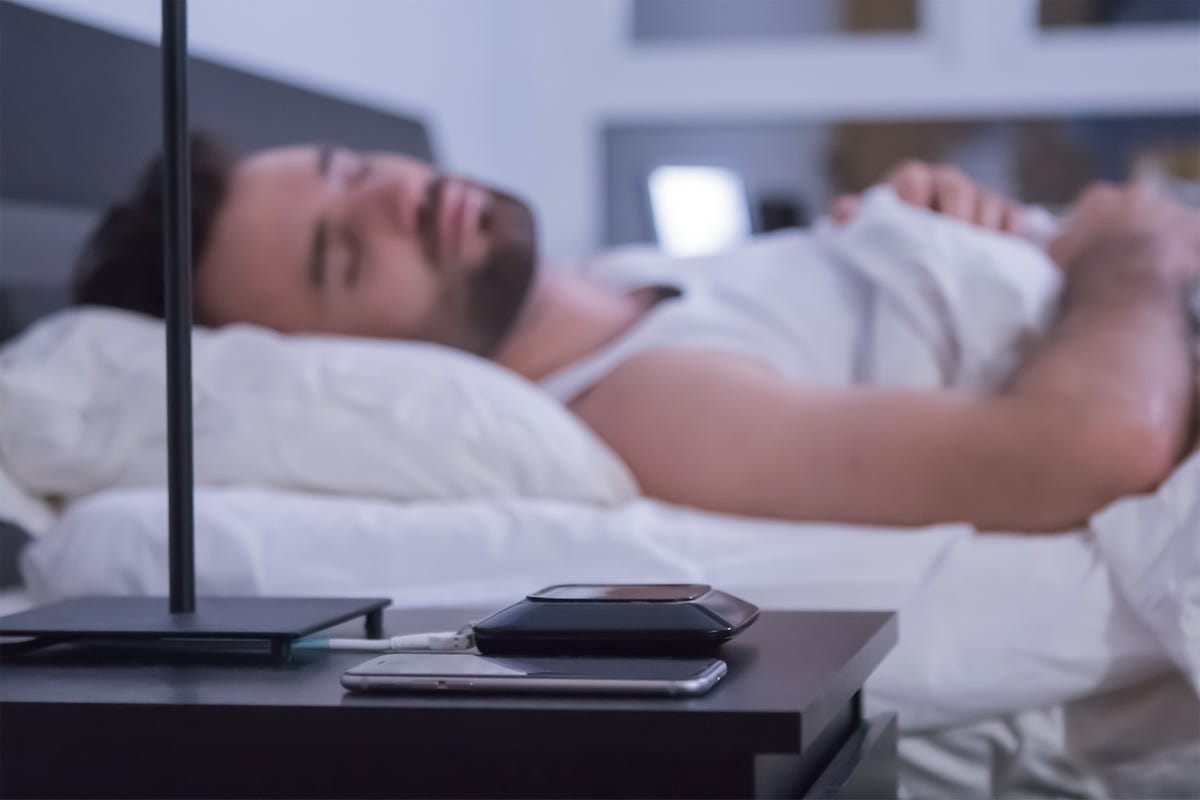 Why You Can Trust CNET
Why You Can Trust CNET Get the best sleep with all this clever tech
Everything you need to get the perfect z's.

The art (and tech) of sleep
Sleep is a puzzle to many people, but it's also essential to good physical and mental health. Over the past few years, technology has emerged that can track sleep patterns and help users optimize the way they rest, ensuring a good night's sleep. Here are just some of the pieces of technology available now for purchase.
The wearable option
The Fitbit Charge HR is one of many sleep-tracking wearables on the market. Using movement sensors and heart rate measurements, Fitbit can tell you how soundly you're sleeping and for how long.
A different kind of Fitbit
For a more affordable wearable, you can also get the Fitbit One. One downside is that you have to wear it with a separate fabric sheath to get the full sleep analytics.
For a little extra style...
Jawbone, like the Fitbit wristband, will automatically track your sleep when you're wearing it. It's not quite as accurate as bands that measure heart rate, and so sometimes overestimates how much sleep users are getting. But it's a stylish and simple way to track sleep.
Microsoft gets in the game
The Microsoft Band 2 also automatically tracks sleep, among many other things.
A high-end wristband
For all the same smarts, plus water proof design and a display showing phone notifications, you can also get the Garmin Vivosmart 2. It tracks sleep using heart rate monitors and movement trackers.
More data = Better sleep
The Basis B1 Band gets more info on your sleep by not only tracking your heart rate and movement, but also tracking perspiration and skin temperature.
A less obtrusive gadget
If you don't want to wear a wristband to bed, there are other options. Beddit is a sensor that straps to your mattress to measure your sleep patterns, so it's perfect for anyone who doesn't want to wear pesky wristbands. At the same time, it's a little less personalized, you can't use it in a shared bed and sometimes it'll stop monitoring if you roll out of range.
Out of sight, out of mind
Samsung's SleepSense is a gadget that slips under your mattress and monitors your movement throughout the night. Each morning, it will tell you how you slept and give you tips for better sleep in the future.
Not just a mattress pad
The Withings Aura takes the mattress pad concept and adds an alarm clock and an ambient light to help improve your sleep.
A DIY option
To get a similar affect with a simpler setup, you can also use color-changing bulbs to get your brain ready for sleep.
Light on the screen
If you spend late nights on screens like your laptop or phone, then you might consider an app like F.lux. It slowly warms the color temperatures on your screens, so the harsh blue light that normally keeps you awake doesn't mess up your brain's internal clock.
Inducing calm
The Rythm Dreem is a unique gadget that you wear. It claims to improve your sleep by -- wait for it -- interrupting your brain waves.
A bed with a brain
Sleep Number has a few smart beds that will track your movement throughout the night and give you feedback on your sleep.
An option for the kids
If you have kids, you can also get a version with extra features for them -- like an app that checks for monsters under the bed.
The budget route
Using the same logic as the mattress pads, many apps will track your sleep when you set your phone on the bed. SleepBot doesn't use movement tracking. Instead, users will punch a button on the app to say they are going to sleep. During the night, the app sets your phone in airplane mode. And it wakes up once the alarm goes off.
Apps, apps, apps
The Sleep Time Alarm Clock is a little different in that it actually tracks your sleep by measuring movement on your bed. Each morning, it generates a chart to show you how you slept.
A better wake-up
Sleep Cycle tracks your sleep in a similar way, but also adds in a smarter snooze feature -- so you wake up during less deep sleep cycles.
Sleep's role in health
For some apps like Lark, sleep tracking is only one feature among many health-related tabs.
For the audiophile
If you care less about your quality of sleep than how you actually get to sleep, then you might look at some creative Alexa skills. The Bedtime Skill can help you go to sleep and wake up at the right times. There's even a Sheep Count Skill, if you're really desperate.
Alexa can also read you stories as you're getting ready for bed. Just tell Echo to read your Kindle book for 30 minutes, and you have your own personal bedtime story read by Alexa.

